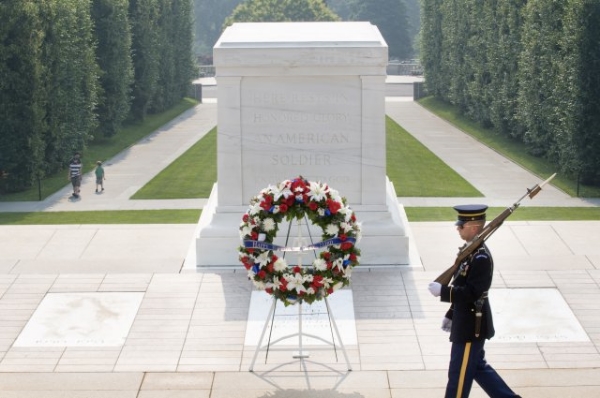


How the idea of a symbolic ‘unknown soldier’ evolved War graves erected after the Battle of the Somme (1916), photographed in the ruins of the Chateau Contalmaison, Picardy, France, 2 September 1917 © IWM 2793 The guests of honour were some hundred British widows who had each lost their husband and all their sons during the war. The guard of honour comprised 96 men decorated for bravery, including 74 holders of the Victoria Cross from the three services. Salisbury, is held within the Parliamentary Art Collection. ‘The Burial of the Unknown Warrior, Westminster Abbey, 1920.’ (King George V is portrayed fifth from right). The pallbearers included the First World War chiefs of the three Armed Forces – Field Marshall Douglas Haig, Admiral Lord David Beatty and Air Chief Marshal Sir Hugh Trenchard. Among the 1,000-strong congregation was the Prime Minister, David Lloyd George, leading politicians and senior members of the British military.

King George V led the national mourning, along with members of the British royal family. The grave of the Unknown Warrior, Westminster Abbey, London. Symbolic of all the dead of the First World War (1914-1918), the soldier was buried in a solemn and profoundly moving ceremony two years to the day after the signing of the Armistice that ended the war with Germany. The body of an unidentified British soldier was buried in Westminster Abbey on 11 November 1920.


 0 kommentar(er)
0 kommentar(er)
